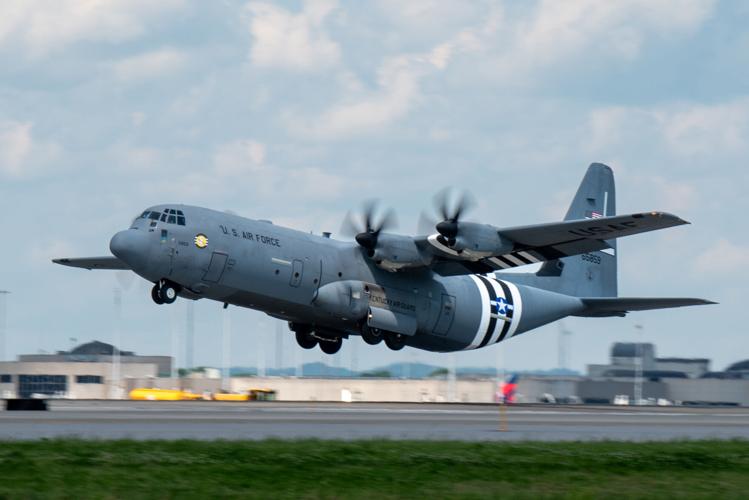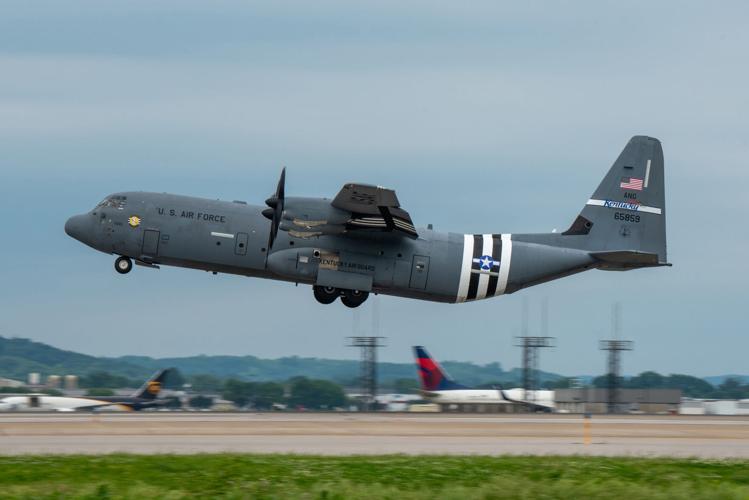LOUISVILLE, Ky. (WDRB) -- A crew of Kentucky Air National Guard members will fly over France to mark the 80th anniversary of D-Day on Thursday.
A Kentucky Air Guard C-130J Super Hercules was emblazoned with distinctive World War II invasion stripes and left Louisville last week. The black-and-white stripes, period-accurate roundels and legacy-inspired nose art were applied in late May.
"I feel honored to be part of this 80th anniversary — to pay tribute to the men who gave so much so we could secure our freedom," Master Sgt. Lee Stanley said in a news release. "Designing the nose art is something I took a lot of pride in, and something I didn’t take lightly. I wanted to make sure we got all the details historically accurate. For a lot of those guys who fought at D-Day, this might be the last chance get to see this. So we really took a lot of care to make sure we got everything right."
According to a news release, the nose art features a unicorn and lightning bolt on a yellow field. It is based on the heraldry and squadron patch of the 368th Fighter Squadron, which was a World War II unit with ties to the Kentucky Air Guard.
D-Day began in the early hours of June 6, 1944, when almost 160,000 Allied troops landed on the Normandy beaches or parachuted behind enemy lines to open the long-awaited second front in the war against Nazi Germany. At least 4,414 troops were killed and another 5,900 were listed as missing or wounded as Allied forces broke through the Nazis’ heavily fortified “Atlantic Wall” to secure a foothold in Northern Europe.
By the end of August, more than 2 million forces from 12 Allied nations had crossed the English Channel, starting the march to Berlin that ended with Germany’s surrender on May 8, 1945.
No one knows exactly how many of the men and women who saw those events firsthand are still living.
Less than 1% of the 16.4 million Americans who served in the armed forces during World War II were still alive at the end of last year, and 131 are dying every day, according to estimates from the U.S. Veterans Administration.
D-Day was the biggest operation of the war and a moment of high drama because everyone knew the Allies would invade Europe, they just didn’t know when or where, said Ian Johnson, a professor of war, diplomacy and technology at the University of Notre Dame.
Related Stories:
- Centenarian veterans are sharing their memories of D-Day, 80 years later
- With time short, veterans seize the chance to keep their D-Day memories alive for others
- Louisville milliner jumping out of plane in Normandy to commemorate 80th anniversary of D-Day
Copyright 2024 WDRB Media. The Associated Press contributed to this report. All Rights Reserved.















